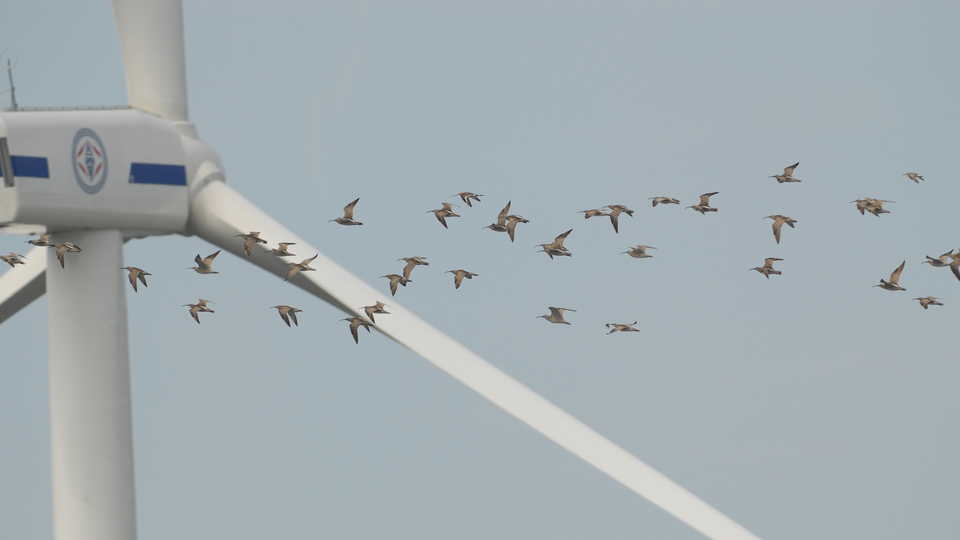Science News
Birds vs. Energy

Birds face many threats in this human-overrun world. Their high-flying lifestyle has something to do with it. Collisions with buildings, automobiles, and communication towers kill over a billion birds per year in the United States. But that’s not even our avian friends’ biggest threat: domestic cats kill somewhere between 2.5 and 4.0 billion birds in the U.S. each year.
And wind energy? “The American Bird Conservancy estimates that there are about 400,000–600,000 birds that die each year from wind turbines,” says Stanford’s Mark Jacobson. It’s a significant amount, to be sure, but when critics use it to deride this clean form of energy, it’s not really the full picture. “When we compare it to other energy sources, a study that was done a few years ago found that wind turbines kill about one-tenth the number of birds per unit of energy generated compared with gas or coal-fired power plants,” Jacobson continues. “Those power plants, they not only destroy habitats during the mining of gas or coal, but also, they produce air pollution that causes premature deaths of birds. In fact, compared with nuclear power, wind turbines kill about half the number of birds per unit of energy than nuclear power partly due to the mining of uranium.”
Perhaps with this big picture in mind, the publication The Condor has a special section out today with several studies looking at energy production’s influence on bird death and bird populations in the United States and Canada. One paper compares threats to birds from all angles and urges future studies to go beyond simple bird mortality and consider population size, species, locations, and more. Another study looks at power transmission lines as threats to raptors, demonstrating that well-marked lines with thicker wires can prevent bird collisions.
Three studies look specifically at wind power and its effects on birds. A study of wind energy sites in Wyoming measured no direct mortality events in a two-year observation period for two species of songbirds—the McCown’s longspur and horned lark. However, the team found that increased wind turbine density (turbines within a one- to five-kilometer radius of each other) negatively affected the nest survival of horned larks in the area. Another paper demonstrates that wind towers in the Great Plains did not affect overwintering sandhill cranes at all. The scientists write that “Using data from cranes marked after tower construction, we found a potential indication of avoidance behavior” by the birds.
Yet another paper, “Avian interactions with renewable energy infrastructure: An update,” examines the influence of location. The authors looked at both wind and solar energy and found, “The effects of placement appear to be important across all energy infrastructure types considered in this review.”While many factors need to be considered, some generalities ring true about avian threats and energy technologies: “large-bodied species with high wing loading and relatively low maneuverability appear to be especially susceptible to direct effects of tall structures, and the risk of collision is likely greater when structures are placed perpendicular to flight paths or in areas of high use.”
As we move to cleaner energy technologies, studies such as these will help ensure the safety of both birds and their habitats. But keep in mind that, in the long run, renewable, emissions-free power is definitely better for the entire planet, including our feathered, flighted friends.
Image: Changhua Coast Conservation Action/Flickr